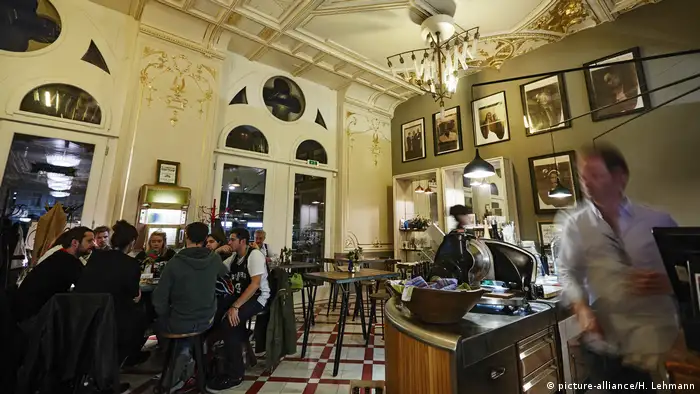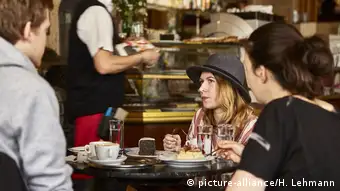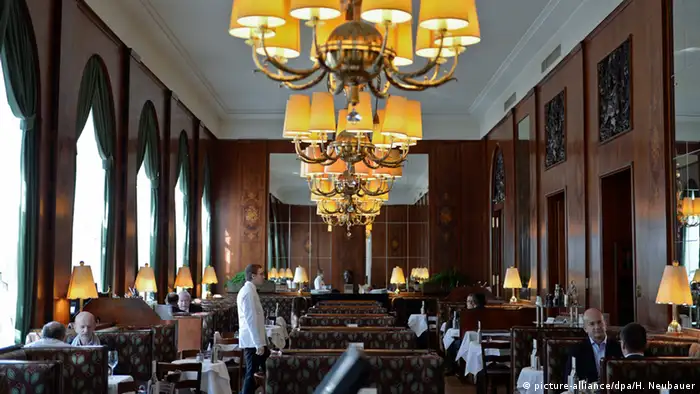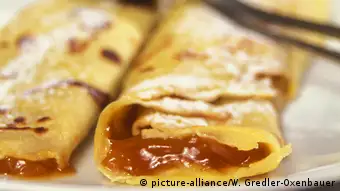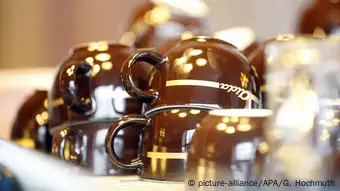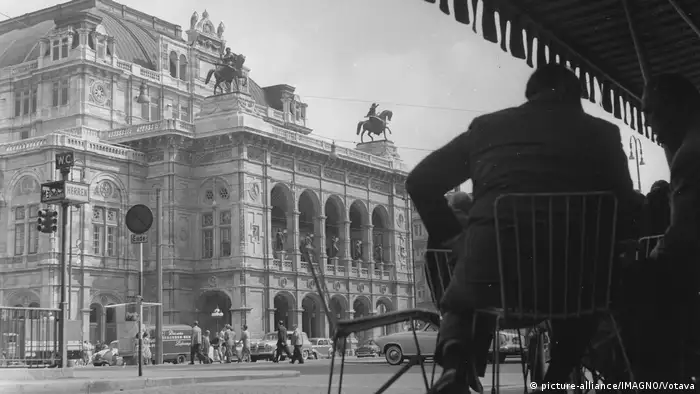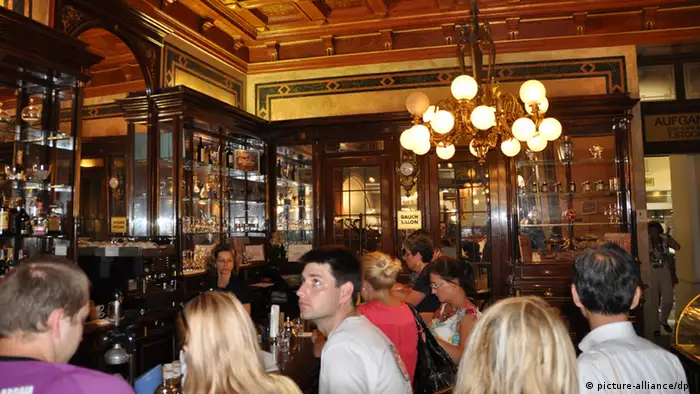Travel
Vienna's coffee house success story
For anyone visiting Vienna going to a coffee house is both a duty and a pleasure. Today there is a choice of nostalgic atmosphere or hipster retro-design. Coffee houses are cult in the Austrian capital and elsewhere.
Visiting a coffee house is a way of life in Vienna. Spending hours reading a newspaper over a cup of mélange isn't a problem. Coffee houses are "places where time and space a consumed and yet only the coffee is found on the bill," UNESCO wrote when it added Viennese coffee house culture to their list of intangible cultural heritage in 2011.
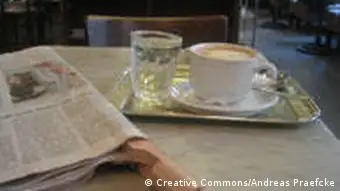
It is served in the Café Bräunerhof
Tourists' impression of the city is also greatly influenced by these many big and small Vienna institutions. "A visit to a coffee house - known locally as an extended living room - is an essential part of a visit to Vienna," says Nikolaus Gräser from the tourist office "WienTourismus".
The younger generation in particular is experiencing a coffee house renaissance. Vienna's oldest and largest coffee house franchise "Aida" is readying itself for new customers. In 2013 all animal based galantine was removed from their products and food was also made halal in order to cater for Moslem customers. That same year saw the first ever branch of the franchise open in Saudi Arabia. Dominik Prousek, himself fourth generation Aida owner, is pursuing a global vision of making sure a branch of the coffee house can be found in every big city. "The Italians and French are ahead of us in this area. It is really important to me to take a piece a Vienna to the rest of the world."
Every day in a production hall on the outskirts of Vienna three tons of cake, strudel and sandwiches are created. The products are not merely delivered to outlets in Vienna, but also to Saudi-Arabia, China and Croatia. The recipes for the Chinese market mean that 60 percent of the sugar stays in the bag, whilst for the Arabian market extra sweetness is added.
For breakfast the head of Aida himself prefers some Danish pastries or a Ribiselschnitte - a meringue flan with redcurrants. The customer's favorites have not changed in over 100 years, meaning the classics and best sellers are: Topfengolatsche, a flaky pastry filled with fromage blanc, slices of cream cake and Punschkrapferl, a sponge cake soaked in rum with pink icing.
To accompany these sweet delights customers consume some 1,800 cups of coffee every day. The first hint that coffee here is special is the way it is served. Coffee in Viennese coffee houses will, without fail, come on a small silver tray, with a spoon, sugar, and a small glass of tap water, sometimes even a chocolate. There are also dozens of local coffee varieties that go beyond the cappuccinos and espressos most people are used to - kleiner schwarzer, kleiner brauner, kapuziner, einspänner, and mélange - to name a few.
Dominik Prousek's great grandfather was a trained confectioner. Together with his wife he founded a bakery in 1913. Initially the pair also sold their sweet treats from hawker's trays at Vienna's State Opera House. Verdi's "Aida" soon became not merely their favorite opera but also their company name. Today the Aida franchise encorporates some 20 outlets.
Coffee became a part of the Austrian capital's identity during the Siege of Vienna, when the Turks tried to capture the city. In 1683 the Austrians successfully chased off the invaders, who left bags of coffee beans behind, effectively introducing Vienna to the beverage. In 1684 official records list the first mention of a coffee house. Around the turn of the century (1900) coffee houses became the meeting place for artists and intellectuals. The waiters, - always clad in tailcoats and bow ties and referred to as "Herr Ober" - along with the marble tables and chandeliers help create the Viennese coffee house charm.
Today there are some 830 coffee houses in Austria's capital, and that's not counting the numerous café-bars, café-restaurants, coffee stalls or coffee shops. About 150 of those are traditional coffee houses with wooden floors, simple chairs and plush couches. In 2011 UNESCO added Viennese coffee house culture to their list of intangible cultural heritage.
Sandra Walder/sbc (dpa)
- Date 02.03.2017
- Feedback: Send us your feedback.
- Print Print this page
- Permalink https://p.dw.com/p/2YW7c
- Date 02.03.2017
- Send us your feedback.
- Print Print this page
- Permalink https://p.dw.com/p/2YW7c

